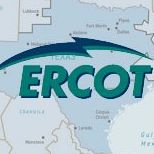The power grid better known as the Texas Interconnection, operated by the Electric Reliability Council of Texas (ERCOT), is famous for being isolated from the other major U.S. grids. But that may soon finally change.
The Department of Energy (DOE) announced Thursday that it would provide up to $360 million in public funding to construct a 320-mile line connecting the ERCOT grid to power grids in the southeastern U.S. According to the DOE, the line, called the Southern Spirit, will be used to “enhance reliability and prevent outages” during potentially catastrophic weather events.
ERCOT’s grid, which can draw power from other grids but is otherwise contained in its own bubble, infamously failed in February 2021 during a significant freeze that gripped the entire Lone Star State. Also known as Winter Storm Uri, the freeze led to outages in 4.5 million homes across Texas.
The DOE said Thursday that the Southern Spirit line, which will run for 320 miles across Mississippi, Louisiana and Texas, will have a capacity of 3,000 megawatts (MW), enough to power a minimum of 600,000 homes. The DOE anticipates the project will create more than 850 construction jobs and 305 operations jobs.
“The U.S. transmission network is the backbone of our nation’s electricity system. Though our grid has served U.S. energy needs for more than a century, our country’s needs are changing,” U.S. Deputy Secretary of Energy David Turk said in a statement. “DOE’s approach to deploying near-term solutions and developing long-term planning tools will ensure our electric grid is more interconnected and resilient than ever before, while also supporting greater electricity demand.”
The $360 million investment to connect ERCOT to a major U.S. power grid is part of the Biden Administration’s Investing in America agenda. According to Thursday’s announcement, three other energy projects across the country will also receive funding, totaling $1.5 billion in all.
I think we all know the history here, so I’ll skip over that. There was a bill introduced earlier this year to connect ERCOT to the US grid, but that didn’t go anywhere. This was an offshoot of the Bipartisan Infrastructure Act, according to that DOE press release. I don’t know if ERCOT applied for this grant or if it was awarded by DOE based on objective criteria, but either way we’re getting it.
This story, kindly pointed out to me by Ginger, adds some details.
The projects, spanning multiple states, will add nearly 1,000 miles of new transmission lines and increase grid capacity by 7,100 megawatts (MW). They’ll boost grid reliability, lower energy costs, and support the clean energy transition.
The projects will improve transmission congestion and resilience, especially as the country faces more extreme weather events. By improving connections between regions and making it easier to access renewable energy sources like wind and solar, these projects will make energy more reliable and cost-effective. They’ll also generate nearly 9,000 jobs, supporting local economies in Louisiana, Maine, Mississippi, New Mexico, Oklahoma, and Texas.
In addition to the transmission projects, the DOE released its National Transmission Planning Study, which outlines a long-term vision for meeting future energy needs through 2050. The study highlights the need to double or triple transmission capacity from 2020 levels to ensure reliability and resilience as the energy landscape shifts toward renewables.
A breakdown of those projects is listed, which includes the Southern Sprit line. The story says it’s “designed to prevent outages like the ones during Winter Storm Uri”, which is great to hear. I don’t know whether ERCOT had a hand in bringing this about or if it was just presented to them, but either way it sounds great. Here’s hoping it gets built before that extra capacity is needed.

